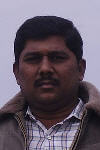By: Murali Krishnan | Comments (6) | Related: > Disaster Recovery
Problem
One of my clients asked me about implementing a High Availability option for his organization. They are using SQL Server 2008, so I told him we should evaluate each of the High Availability options that can be implemented for SQL 2008. I also recommended that the preferred option should consider the Recovery Time Objective (RTO) and Recovery Point Objective (RPO) for the business. In this tip, I cover SQL Server 2008 High Availability options that are available out of the box.
Solution
There are 4 High Availability options in SQL Server 2008 that we will cover; Failover Clustering, Database Mirroring, Log Shipping and Replication. Each one has its own features and benefits.
As you may know, the Recovery Time Objective (RTO) which is the tolerable maximum length of time that a system can be unavailable and Recovery Point Objective (RPO) which is how much data can be lost, need to be considered to meet the organizational objectives for each application that is critical to the business. Any desired High Availability option should satisfy these objectives.
High Availability Options
SQL Server 2008 provides options for setting up high availability for a server, database and object level.
The Failover Clustering supports server level high availability whereas Database Mirroring and Log Shipping are per database and Replication is object level. The below image depicts these breakdowns.

Failover Clustering
This provides server-level redundancy on a certified Microsoft Windows Cluster Services Configuration. A failover cluster is setup with a minimum of two servers. In the cluster setup, each server is called a node. All the nodes are connected to shared disk resources. Only one node is active at a time for a SQL Server instance and serves all the requests for that instance of SQL Server. When the active node fails, failover takes place and one of the other available nodes will become the active node. More information can be read from this MSDN library article.
Use:
- This is an appropriate option for mission critical applications where automatic failover is needed for the entire instance of SQL Server.
Recovery:
- Recovery Time Objective (RTO) - Almost immediately, because processing is handed over to another node in the cluster.
- Recovery Point Objective (RPO) - If there is no data corruption or data loss (due to data deletion), there is minimal to no data loss during the failover.
Pros:
- It provides automatic failover.
- It protects an entire SQL Server instance.
- Can apply service packs to one node at a time to minimize downtime.
- If secondary server is used in a passive mode (only for failover), additional SQL Server licensing is not needed.
- It is more expensive since it requires special hardware for the setup as well as redundant hardware.
- It is not supported with all SQL Server editions. (see chart below)
- It is a single shared data resource.
Database Mirroring
This provides database redundancy by transferring data from the transaction log to another instance of SQL Server. There are several operating modes that can be used such as: high performance, high safety with automatic failover and high safety without automatic failover. Based on the operating mode, we can have complete or almost complete database redundancy. More information can be read from this MSDN library article.
Use:
- This is a good option when there is the need to have automatic failover for a database. It can be near real time failover of a database depending on the options used. Also a good choice if there is a need to provide database connectivity with minimal downtime.
Recovery:
- Recovery Time Objective (RTO) - Depending on the options used it could be almost immediately for a database, because the mirror copy will become the primary copy. Also, if you use the Failover Partner option in the connection string the application should be able to find the new server without any other configuration changes.
- Recovery Point Objective (RPO) - If there is no data loss (due to data deletion), there is minimal to no data loss during the failover. Because this is an exact copy of the primary database all transactions will be replicated to the mirror copy as they were done on the primary server.
Pros:
- It provides automatic failover. (if used with a witness)
- Snapshots of the database can be created against the mirrored copy for read only access and off-loading reporting to another server.
- It provides near real time failover of a database, depending on the options used.
- No additional cost, except for the need to have another available server for the mirror and possibly a third for the witness.
- If secondary server is used in a passive mode (only for failover), additional SQL Server licensing is not needed.
- High safety without automatic failover setting may be network overhead.
- A third server is required for "automatic failover" (witness - SQL Server Express can be used)
- Other items need to be handled outside of mirroring such as logins, SQL Agent jobs, etc...
- Requires additional storage for mirrored copy
- If Snapshots are used for read only, the snapshot is only as current as when the snapshot was created.
Log Shipping
It provides database redundancy by sending transactional log backups periodically to a standby server or servers for the entire database. Transaction logs are automatically backed up, copied, and restored on the standby server(s). If the active server goes down, the standby server can be brought up by restoring any remaining shipped logs and then the database is recovered for use. More info on Log Shipping can be read from this MSDN library article.
Use:
- It is good option when we want to have multiple secondary failover servers for a database.
Recovery:
- Recovery Time Objective (RTO) - Failover is manual for this option, so this will take as long as it takes you to get the secondary server up and running.
- Recovery Point Objective (RPO) - If there is no data loss (due to data deletion), there is minimal to no data loss during the failover. Because transaction backups are applied to the secondary server all transactions will be replicated as they were done on the primary server. If you delay applying the transaction logs you could do a point in time recovery right before an accidental deletion of data occurred.
Pros:
- Log shipping can be configured to multiple standby servers.
- Can use compressed backup feature to limit network bandwidth
- It includes all the database objects along with their schema changes.
- By specifying Log Shipping in short interval, it can be near real-time database.
- Can be setup to use secondary server for read only activity
- No additional cost, except for the need to have another available server for the secondary copy.
- Can delay when the logs get applied to secondary server to help minimize data loss in the event of accidental data deletion (point in time recovery)
- If secondary server is used in a passive mode (only for failover), additional SQL Server licensing is not needed.
- There is no automatic failover.
- Other items need to be handled outside of Log Shipping such as logins, SQL Agent jobs, etc...
- Requires additional storage for log backups and shipped copy
- If standby copy is used for read only, SQL requires exclusive access to the database when a log backup is restored
Replication
Replication is a set of technologies for copying and distributing data and database objects from one database to another. Replication is a desired option when we want to have the same data on multiple database servers. There are different types of replication and more info on Replication can be read from this MSDN library article.
Use:
- It is good option when we want to have multiple server updates with disconnected options. It can be near real time. It can also be used to implement load balancing for a database.
Recovery:
- Recovery Time Objective (RTO) - This could be immediate and only require re-pointing your application to a different server.
- Recovery Point Objective (RPO) - If there is no data loss (due to data deletion), there is minimal to no data loss during the failover. Because this is an exact copy of the primary database all transactions will be replicated to the mirror copy as they were done on the primary server.
Pros:
- Can be configured for individual database objects instead of the entire database.
- Enhanced tools available for configuration and troubleshooting.
- Provides near real time disaster recovery.
- It supports disconnected architecture, so it is beneficial for mobile users.
- Secondary copy could be used for near real-time reporting to offload reporting use on production database.
- Reconfiguration may require manual intervention.
- Need to rely on distributor to push changes.
- Other items need to be handled outside of Replication such as logins, SQL Agent jobs, etc...
- It is more complicated to setup and maintain then the other options.
- SQL Server will need to be fully licensed for the secondary server.
Selecting a High Availability Solution
Each SQL Server 2008 High Availability option addresses different risks. As we know, no "one" solution fits all. We need to review carefully the business requirements. Basically, we need to consider a few questions like:
- Is Automatic Failover required?
- What is the data granular level for the High Availability?
- How much data loss or downtime is accepted?
- Is the standby server needed to provide read access?
- What are the budget constraints?
The High Availability requirement may differ from client to client, some clients may need the database to be up and running 24X7 and others may require only during office hours. So based on the client criticality need we have to choose appropriate the High Availability option. Otherwise there will be unnecessary expenses in terms of money, performance and resource utilization.
It is also very important to know what options are available in the different SQL Server editions before planning for the actual implementation. The below table shows differences between Enterprise and Standard High Availability features.
| HA Options | Enterprise | Standard |
|---|---|---|
| Clustering | 16-node failover clustering | 2-node failover clustering |
| Database Mirroring | Full Support | Partial Support (Single Threaded, Safety Full Only) |
| Log Shipping | Full Support | Full Support |
| Replication | Full Support | Oracle Publishing not supported. |
To summarize:
- Failover Clustering is an ideal selection if there is no budget constraint.
- Database Mirroring is alternative choice with minimal down time, because of automatic failover.
- Log Shipping is a good selection if we want to have multiple secondary servers.
- Replication is a good selection when there is the need to duplicate some of the data, send the data to multiple servers or for disconnected architecture support.
- Multiple options can be used, if there is a need to further protect from failures.
- This is not a complete list of all pros and cons for each option, but I hope this gives you a starting point on which technology to consider for your environment.
Next Steps
- High Availability Solutions Overview
- High Availability with SQL Server 2008.
- Selecting a High Availability Solution
- Review these MSSQLTips categories:
About the author
 Murali Krishnan is a Lead Consultant with vast experience in Database/BI Design, Development and Administration.
Murali Krishnan is a Lead Consultant with vast experience in Database/BI Design, Development and Administration.This author pledges the content of this article is based on professional experience and not AI generated.
View all my tips






